The body of a duck is designed in a way to resist cold. Ducks have extra layers of fat, thick plumage, and their oily preen gland – all features that insulate them in cold weather. You will find that under normal circumstances, most ducks will resist cold to some degree.
Overall, ducks are resistant to cold. But some may offer more resistance than others. In this article, we talk about a few of many cold-hardy duck breeds.
Table of Contents
1. Khaki Campbell
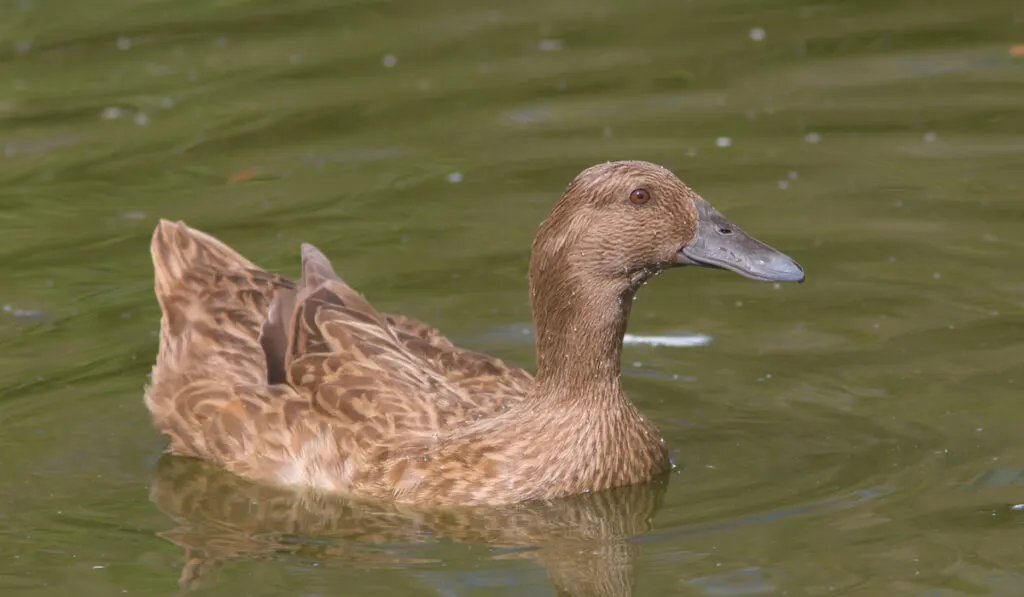
The Khaki Campbell breed is one of the top egg-producing duck breeds. But beyond that, this breed is pretty hardy. They even keep laying eggs into the winter, and in a year, you can get as many as 300-325 eggs from them.
Aside from continuing their egg-laying through winter, Khaki Campbells are known to survive subzero temperatures even for weeks. At the same time, they can stay unaffected by temperature rises to 100 degrees.
You might be surprised to know that Khaki Campbells are not at all heavy. They are a lightweight breed with a weight range of 4 to 5 pounds. Since they are this small, they are not really favored as a meat breed. But you will get many eggs from them in the first 3 to 4 years.
2. Pekins
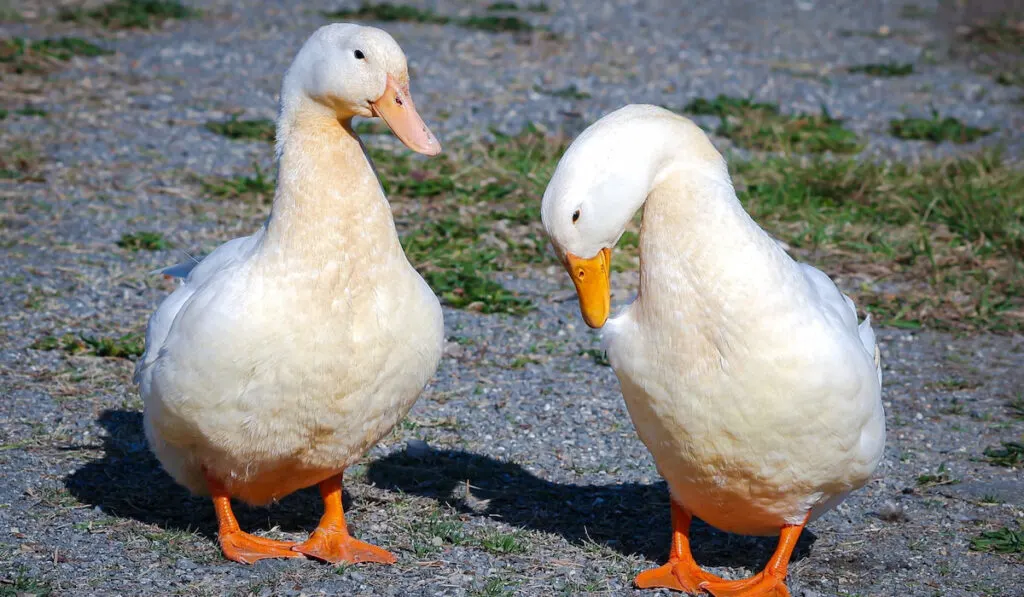
Pekins are a large breed with an average weight of 8 to 11 pounds. Going by this size, you can guess that they would tolerate cold to a decent degree. The size of these ducks also makes them a worthy option for duck meat.
But beyond that, Pekins are decent layers. One can get a yield of 200-300 eggs from them per year.
Pekins get along well with humans and other birds in the poultry yard. They are curious and friendly. But they can sometimes be pretty loud.
3. Muscovy
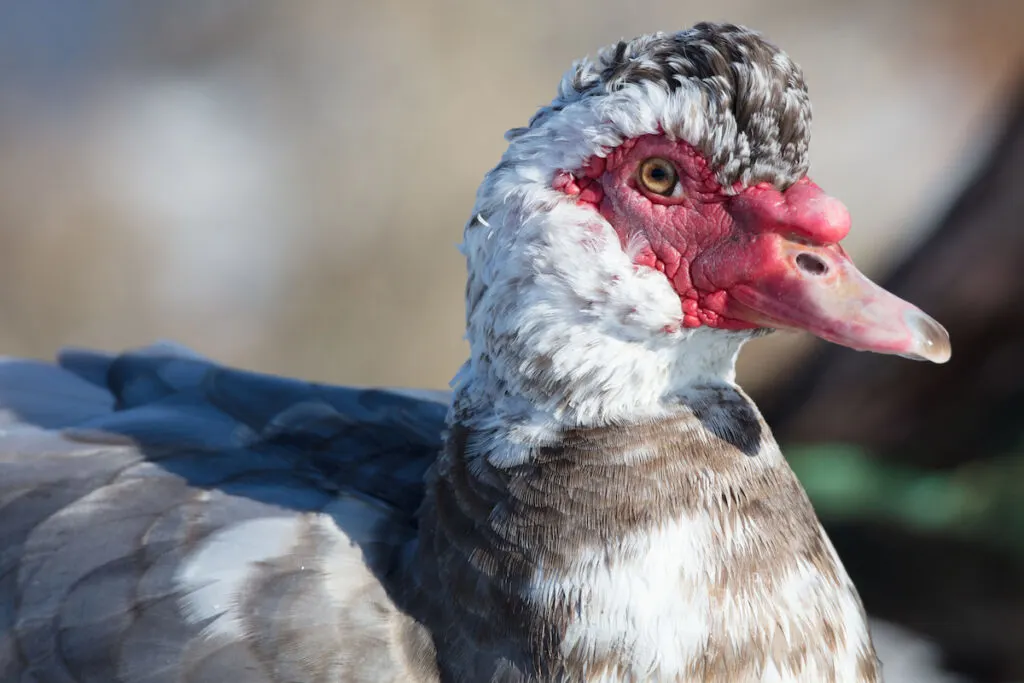
Muscovy ducks are large ducks. The drakes can weigh around 12 to 16 lbs. – pretty huge. The females, on the other hand, are smaller and weigh up to 8 pounds.
Muscovy ducks come with a significant lean muscle mass. This musculature might just be one of the reasons members of the breed as cold-hardy. In fact, no other breed matches this breed in meat yield.
While Muscovy ducks are dual-purpose, they are best kept for meat. On average, they offer around 60 to 120 large eggs in a year, which is not impressive.
The meat from a Muscovy duck is mostly fat-free. It has lower calories compared to turkey meat and is not greasy when cooked.
Considering how quiet they are, Muscovy ducks might be good as pets. They are friendly and non-aggressive. But they do not fancy being picked up.
4. Appleyard Ducks
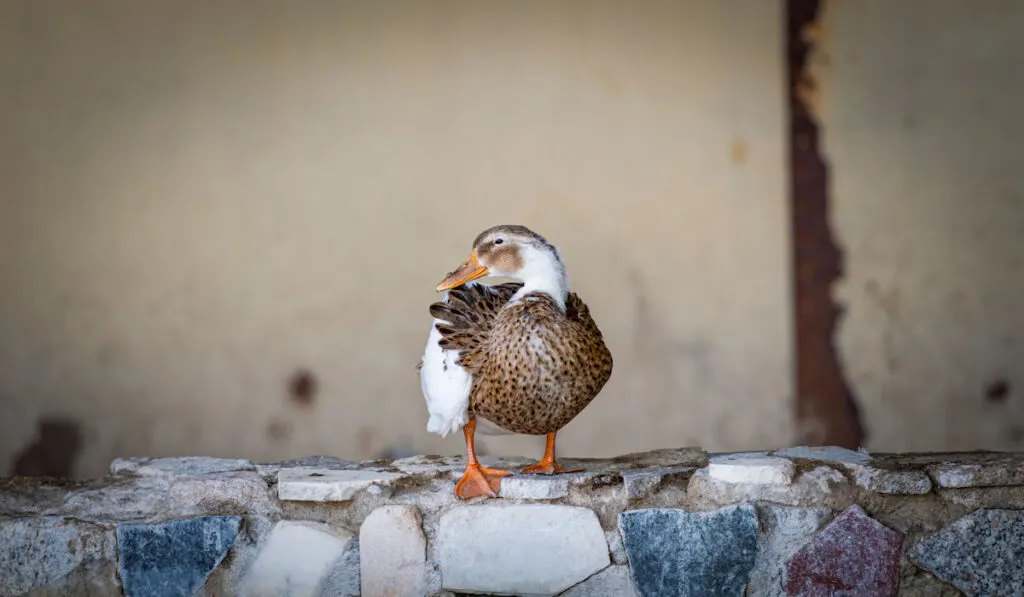
The standard Appleyard Ducks or Silver Appleyard are relatively large. They typically weigh between 7 to 9 lbs. There is also the bantam variety, which usually weighs around 2 lbs.
Going by their large size, it is understandable how Appleyard ducks are significantly cold-hardy.
They are known to tolerate some markedly cold conditions, and they also lay eggs through fall and winter. On average, you can expect as many 250 large, white eggs from them in a year.
Appleyard ducks are active foragers. But if you feed them well, they will not go too far. Besides being cold tolerant, Appleyards do well in most weather conditions provided their needs are met.
The Appleyard breed is an all-purpose one – the ducks are reliable layers, and they can be used for meat.
One marked feature of the members of this breed is their sexually dimorphic plumage. The males have green heads, black tails, and brown necks. On the other hand, the females have gray, off-white, fawn, brown, or buff plumage.
5. Cayuga Ducks
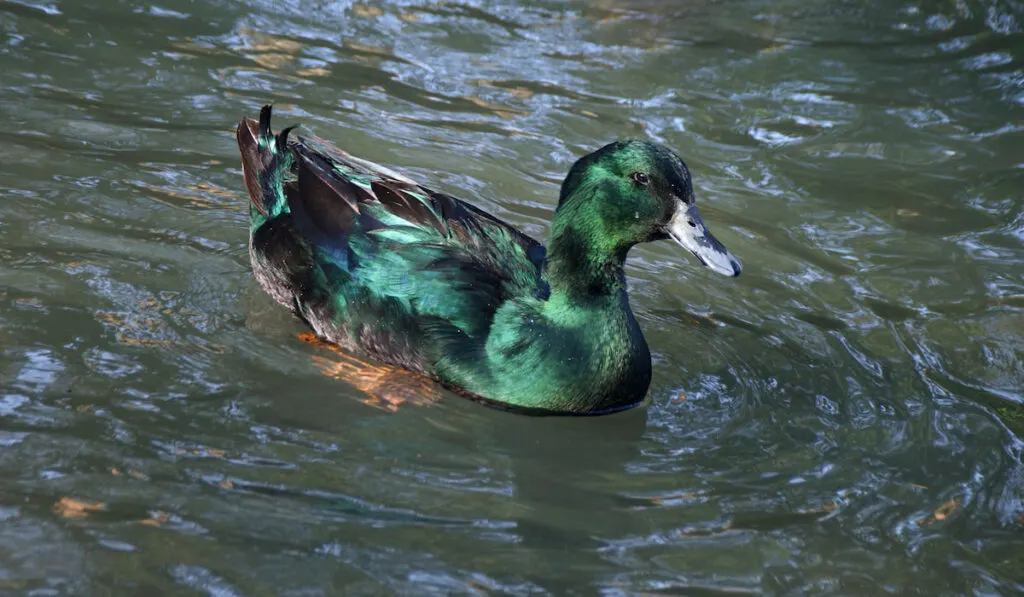
Cayuga ducks are cold-hardy enough to resist some pretty harsh winter periods in the Northeast. They are a medium breed with weights of around 7 to 8 pounds.
You may breed Cayuga ducks as pets, as layers, or for their meat. But be aware that they are fair layers.
Offering around 100-150 large black eggs in a year. The eggs may sometimes come out grey or even white as the laying season runs out.
Cayuga ducks are easy to train and tame. They are also pretty social, friendly, and docile. Hence, their suitability as pets.
6. Rouen
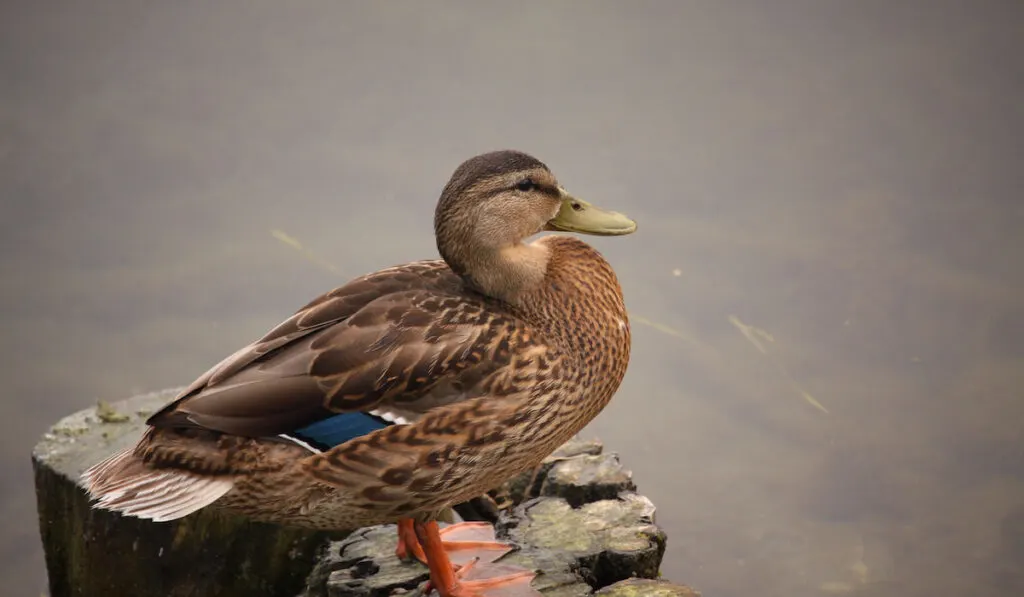
Rouen ducks are a large breed. They are hardy, and with their size, it is not hard to see why.
Rouen hens typically weigh around 6 to 7 lbs., while the drakes weigh up to 10 lbs. Though they may finish relatively large, Rouens do not reach butcher weight as quickly as many other meat ducks.
Rouen ducks also lay eggs all year round, including winter. But if you are getting your ducks for the eggs, this should not be your foremost choice.
On average, they lay about 140-180 eggs per year. So, you might get better output with some other breeds.
However, if you want duck meat, then Rouens are pretty suitable. Theirs is described as flavorful, juicy, and not as greasy as most duck meats.
7. Mallards
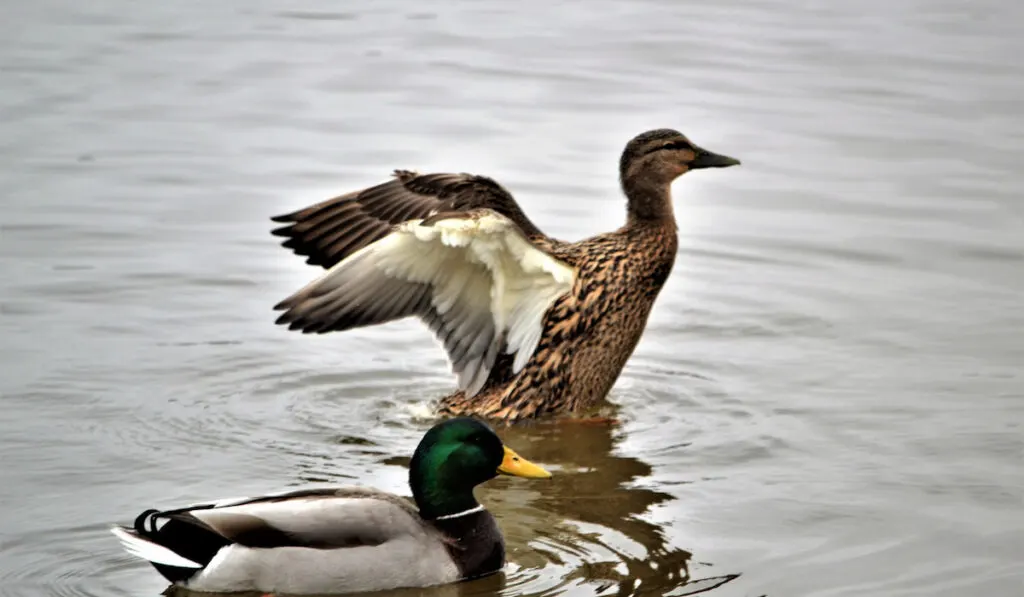
Mallards and Rouens look very much alike. But while both breeds are cold-hardy, Rouens are larger. The average weight of a Mallard falls between 2-4 lbs. So, you could say Rouens are about 2 to 5 times the size of Mallards.
The hardiness of Mallard ducks is also seen in their embryos. A study suggested that Mallard embryos show some resistance against cold to reduce low hatches in the wild.
Mallards are wild ducks typically found in areas around the Northern hemisphere. But when winter comes, they usually migrate towards the south, where it is less frosty.
One might think their sole purpose for migration is the chilling temperatures. However, it is not. In fact, it might be the least of their worries.
Mallards migrate in winter because the change in weather affects their access to food. Most plants will not grow, most seeds and grains are covered, and most water sources are frozen. So they have to move southwards to survive.
8. Welsh Harlequin
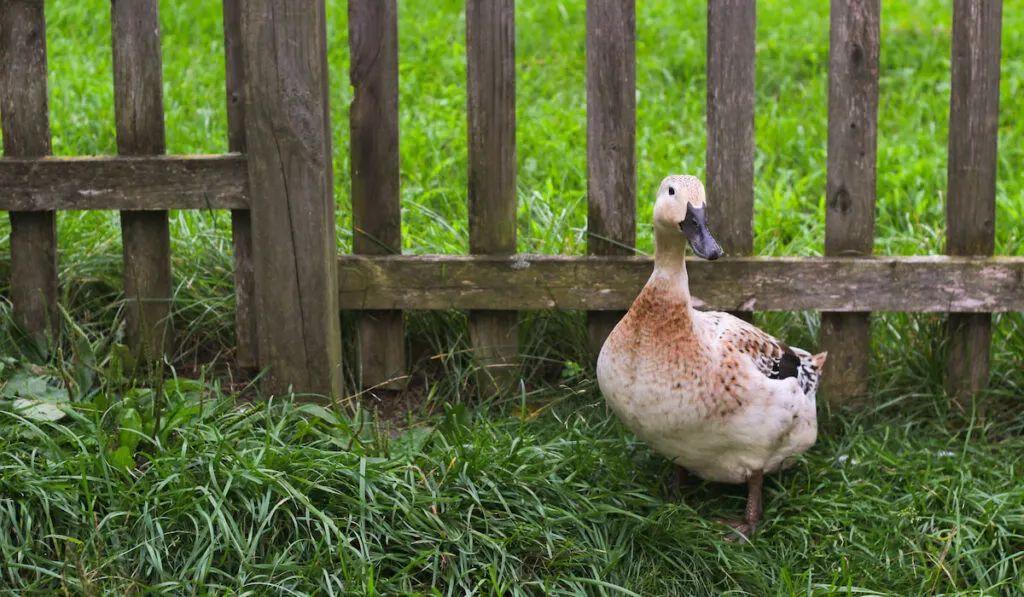
Welsh Harlequins are also one of the hardiest ones. They are pretty tolerant to varying weather conditions.
Be it cold, heat, or changing weather conditions, Welsh Harlequins appear to be relatively unfazed. So long there is a suitable coop, sufficient healthy food, and steady water, they do well.
The Welsh Harlequin breed belongs to the light class. On average, they weigh 5 to 5.5 lbs.
Welsh Harlequins can lay as many as 250-300 eggs in a year. Even in the cold winter months, they keep producing eggs.
You can encourage egg production during these cold periods by providing supplemental light. This light would act as an alternative to the ample sunlight they need for egg production.
While they perform excellently at laying eggs, Welsh Harlequins are also bred for their lean meat.
Besides being great dual-purpose birds, Welsh Harlequins can be great companions too. They are calm, curious, and they usually do not fret around humans.
9. Indian Runner Ducks
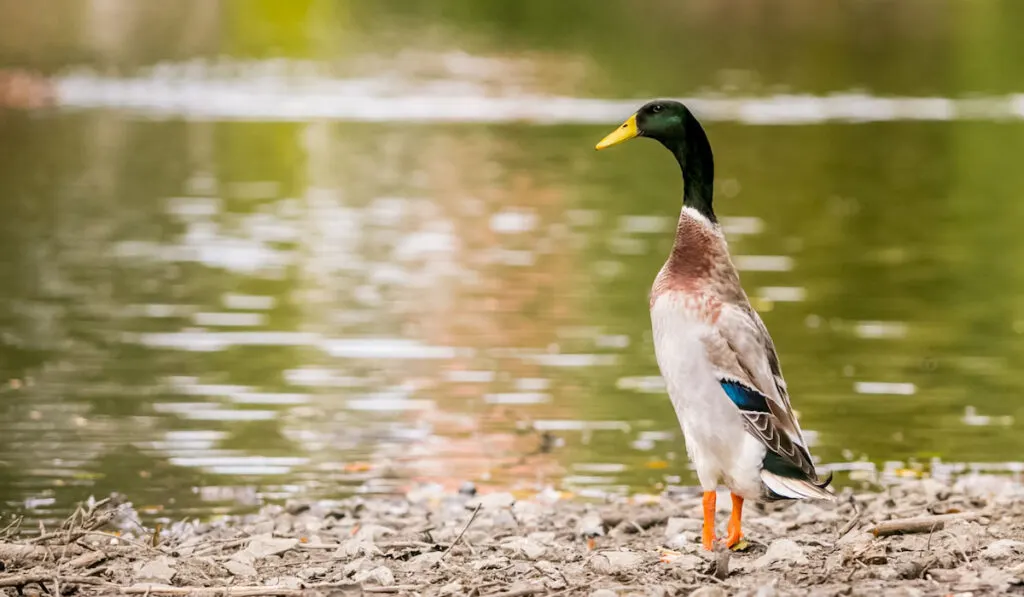
Apart from not being prone to illness, Indian Runner ducks are cold-hardy. Whether in hot or cold weather conditions, they stay pretty unfettered.
Although they are a light breed, they have a high flesh-to-bone ratio. This may be one of the features that contribute to their resistance to cold.
The average Indian Runner drake weighs around 3.5 to 5 lbs. The hens, on the other hand, weigh between 3 and 4.5 lbs.
Indian Runner ducks lay as many as 300-350 large eggs per year. It is not uncommon for them to lay eggs through fall and even in winter. Some sources even believe they lay better and more persistently during the said seasons.
Indian Runners are also kept for their meat, although the yield from them is not spectacular. You can expect the flesh of a mature Indian Runner duck to feed about two people.
You may also get them as pets. At first, they may be nervy and timid. But with time, they warm up and open up to their owners.
10. Call Ducks
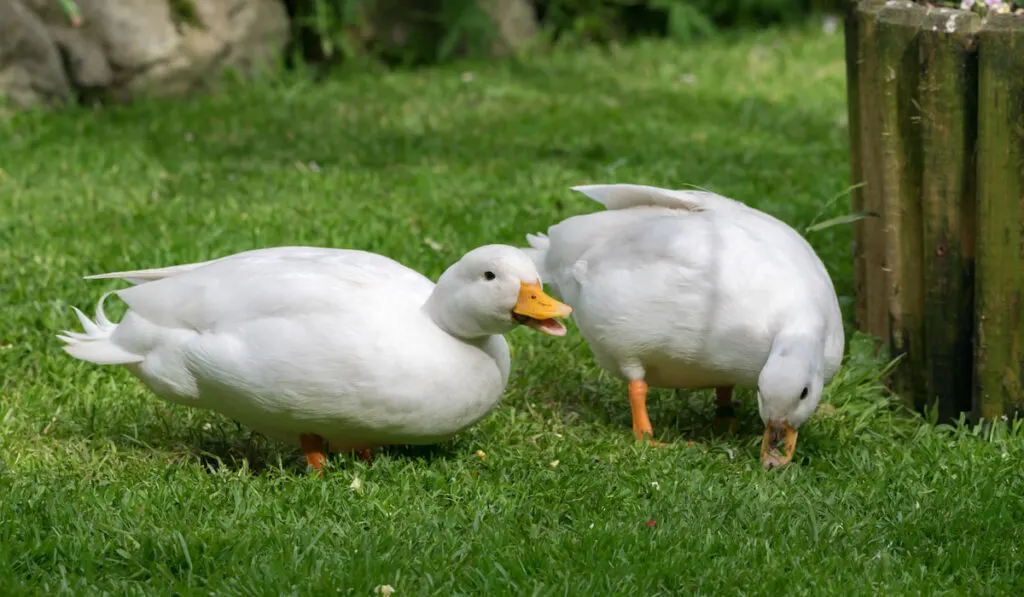
They might be bantam, but adult Call ducks do well in cold weather. The ducklings, on the other hand, may need some help to keep warm. On average, the males weigh around 1.5 pounds, while the hens weigh 1.2 pounds.
Call ducks are known to lay eggs through winter. Albeit the output during that period is less than the usual.
In a year, you can get about 50 to 150 eggs from them. That value is not the most excellent laying output amongst ducks. So, in most cases, people keep Call ducks as pets and for exhibition purposes.
We must mention that Call ducks are talkative. Perhaps this is why they are so named.
11. Saxony Ducks
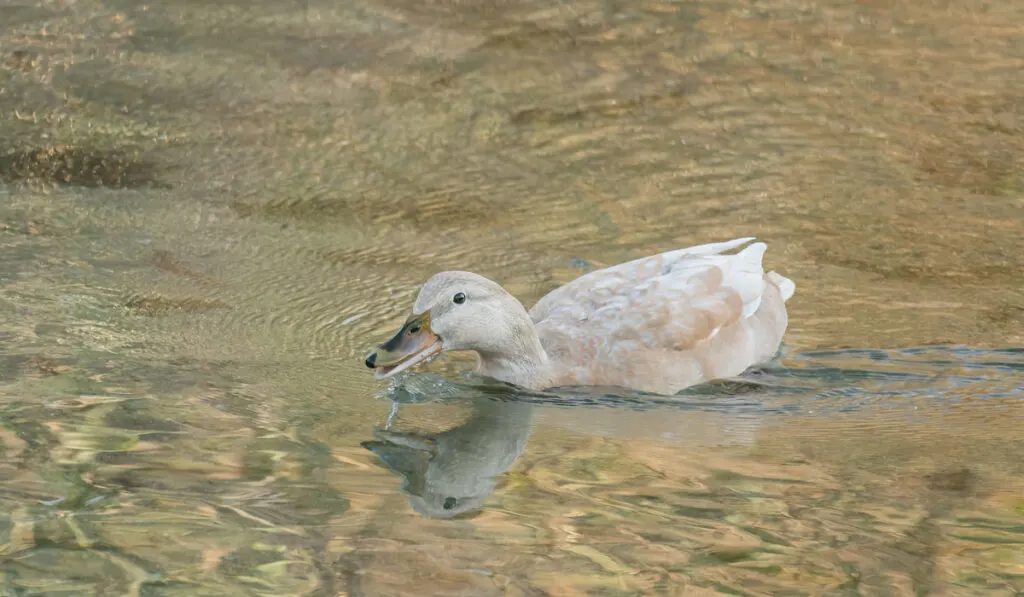
Saxony ducks were developed from a crossbreeding between Rouen and German Pekins with Blue Pomeranians.
At one point during the second world war, most members of this breed were lost. But a breeder, Alfred Franz, successfully restored the breed.
Saxony ducks are large, with average weights of around 7 to 8 pounds. They are a heavy breed, so they are not very susceptible to predatory attacks. But more than that, their large size may contribute to their cold-hardiness.
The females produce around 190-240 large eggs per year, making them a pretty decent layer breed. But beyond being layers, Saxony ducks may also be kept for their meat.
While Saxony ducks can be somewhat calm and gentle, they can also become noisy when startled. They are a confident and lively breed. All in all, they are a fun sight.
12. Orpington Ducks
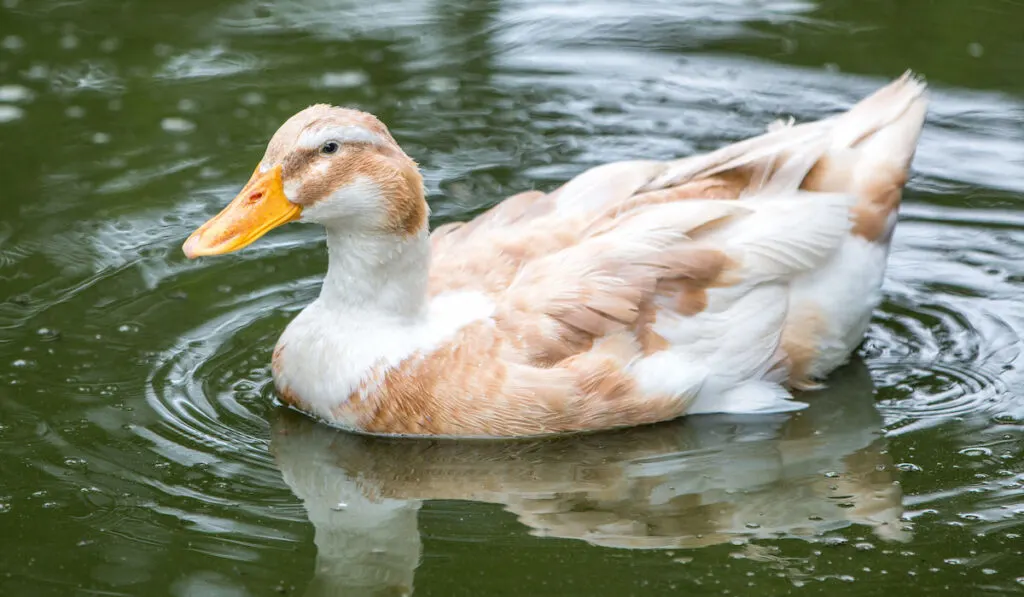
Graceful, friendly, and docile, Orpington ducks are bred for various reasons. They could be kept for eggs, meat, or even as pets. Orpington ducks are also pretty cold-hardy.
They are medium-sized birds: the hens weigh around 5-6 lbs. The male Orpingtons can weigh as much as 6.5 to 8 lbs.
Besides being tolerant to cold, Orpingtons also do well in hot weather. Given that they have water to cool off in, heat does not affect them too much.
If you want eggs from your Orpington ducks, you should expect 180-245 large white eggs in a year. Orpingtons are said to lay at a rate of 3-4 eggs per week.
Thinking of keeping Orpington ducks as pets? Well, you will be getting one of the most social ducks. They are pretty intelligent, friendly, calm, and docile. Perhaps this is why they are usually kept as pets.
Resources
- https://www.roysfarm.com/silver-appleyard-duck/
- https://www.cooksinfo.com/appleyard-duck#
- https://www.thehappychickencoop.com/welsh-harlequin-duck-everything-you-need-to-know/
- https://www.thehappychickencoop.com/duck-breeds/
- https://www.jstor.org/stable/3799426?seq=1
- https://www.nationalgeographic.com/animals/birds/facts/mallard
- https://www.ducks.org/conservation/waterfowl-research-science/mallard-life-cycle
- https://www.thehappychickencoop.com/indian-runner-duck-breed-everything-you-need-to-know/
- https://www.countryfarm-lifestyles.com/indian-runner.html
- https://www.purelypoultry.com/adult-call-ducks-p-1270.html
- http://www.callducks.net/looking_after_calls.htm
- https://www.roysfarm.com/call-duck/
- https://www.fresheggsdaily.blog/2012/06/raising-ducklings-our-new-saxonies.html
- https://www.thehappychickencoop.com/buff-orpington-duck-breed-everything-you-need-to-know/
- https://www.thehappychickencoop.com/khaki-campbell-duck-everything-you-need-to-know/
- https://www.communitychickens.com/duckbreeds/
- https://www.roysfarm.com/cayuga-duck/
- https://www.thehappychickencoop.com/muscovy-duck/
